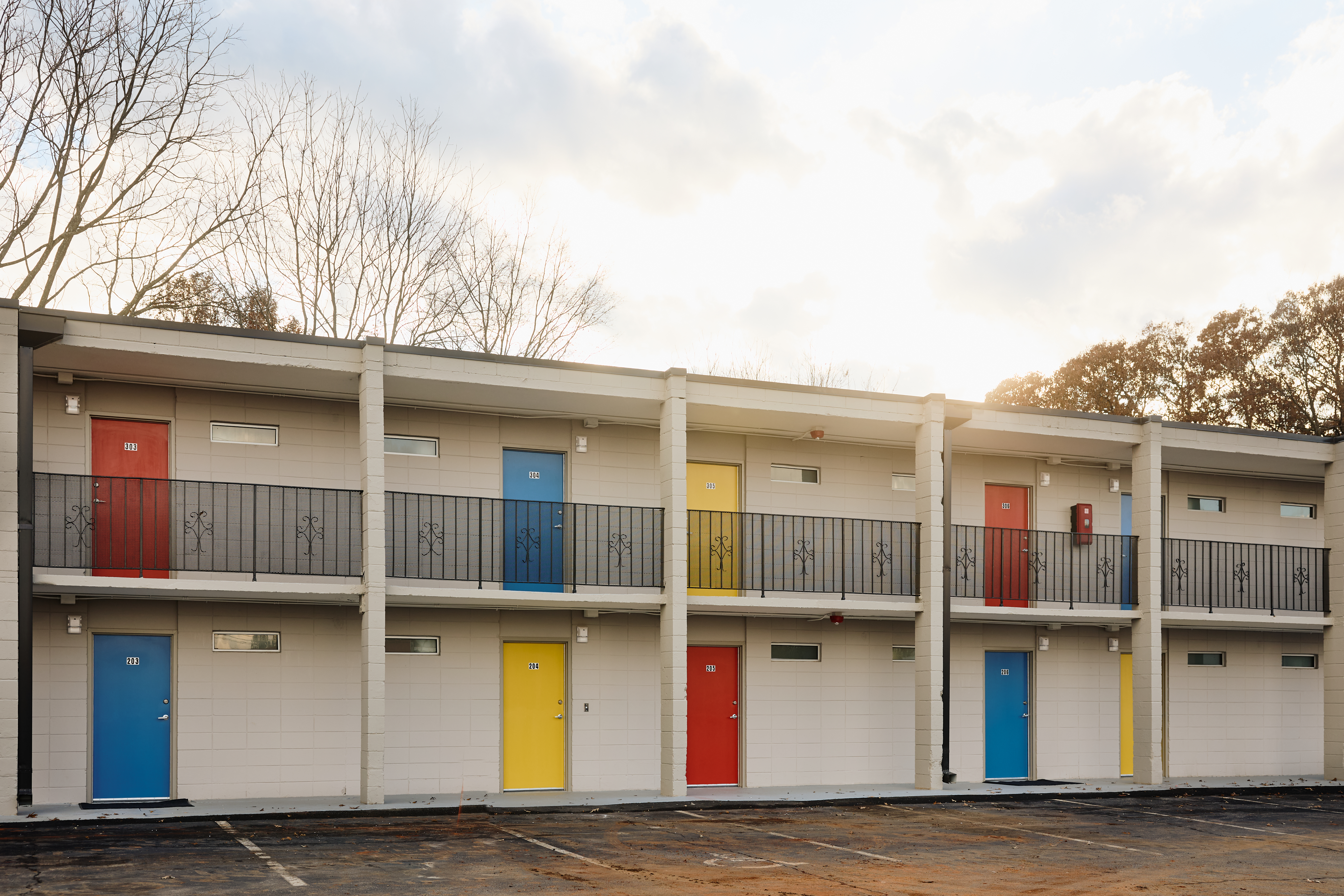Beltline Housing Efforts: Building a Stronger, More Inclusive Atlanta
How One Affordable Housing Project Reflects the Beltline’s Bigger Mission
- Affordable Housing
- Atlanta Beltline‚ Inc.

While the Atlanta Beltline is widely known for its vibrant trails and public spaces, it’s also at the center of a deeper effort: ensuring that all Atlantans, regardless of income, can benefit from the city’s transformation.
In Reynoldstown, the former Atlanta Motel reopened in late 2024 with a new purpose. Reimagined as The Ralph David House, the development now offers 56 permanent, affordable studio apartments for individuals who were formerly unhoused.
Spotlight on the Ralph David House
Located near the Beltline’s Southeast Trail, The Ralph David House is more than a place to live—it offers connection. Many residents use the Beltline daily to commute and access employment along the corridor, providing a vital link between housing, economic opportunity, and community.
“Projects like this for Atlanta are so important because nobody should be left behind in the success of the Beltline.”
— Stan Sugarman, Principal & Co-founder, Stryant Investments
Atlanta Beltline, Inc. partnered with the City of Atlanta, Invest Atlanta, Partners for HOME, and Stryant Investments to develop the project in support of our goal to create or preserve 5,600 affordable homes within the Beltline Tax Allocation District (TAD) by 2030. Thanks to similar public-private collaborations in addressing housing needs, 77% of that goal is already complete.
Understanding AMI
When we talk about affordability, the conversation must begin with Area Median Income (AMI). Calculated annually by the U.S. Department of Housing and Urban Development (HUD), AMI represents the midpoint of household incomes in a specific region and is a key metric used to determine eligibility for affordable housing programs.
HUD Income Categories:
Low Income: 80% or less of AMI
Very Low Income: 50% or less
Extremely Low Income: 30% or less
In Atlanta, affordable rental housing typically serves families earning 80% or less of AMI, while homeownership programs support families earning up to 120% of AMI. The Beltline prioritizes housing for families earning 60% of AMI or less, addressing a significant affordability gap.
The Ralph David House specifically serves residents at or below 30% of AMI—a population often left out of traditional affordable housing efforts. As the Beltline’s first permanent supportive housing investment, it marks a historic step that offers lasting stability to the residents who need it most.
As the Beltline project connects Atlanta, the project stands as a symbol of how the city’s growth can be both inclusive and restorative.
Watch the video to learn more about the project and visit www.beltline.org/housing to explore resources for both owners and renters.
Subscribe to In The Loop, our monthly newsletter, for Beltline news, events, announcements and more.